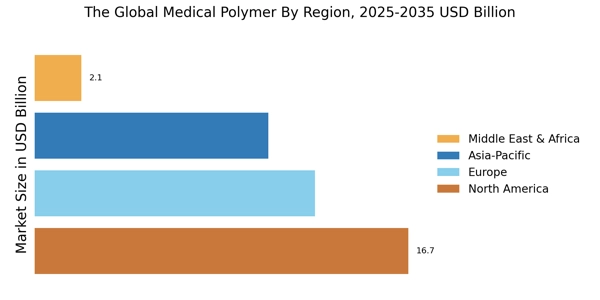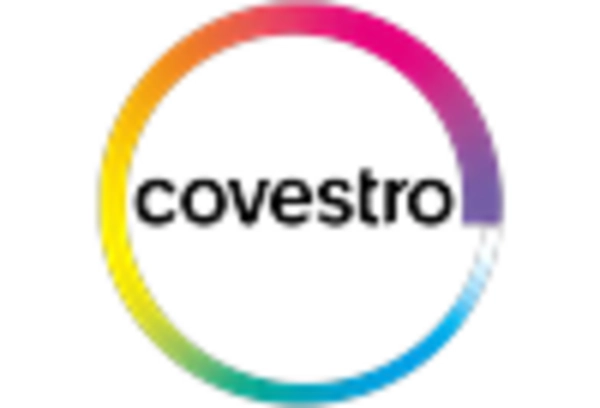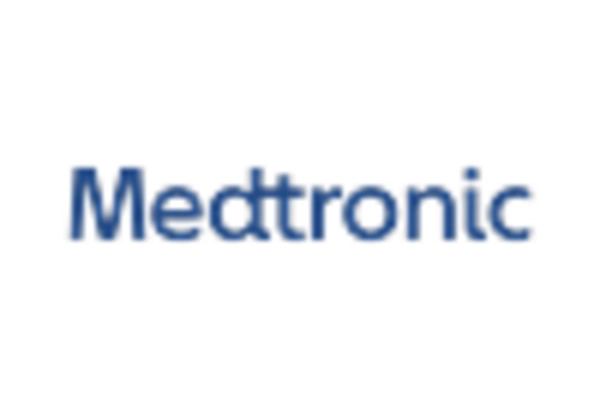Growth of the Healthcare Sector
The growth of the healthcare sector is a significant driver of The Global Medical Polymer Industry. As healthcare expenditures rise globally, there is an increasing investment in medical infrastructure and technology. This expansion is accompanied by a growing need for medical devices and consumables, which often rely on polymers for their production. The healthcare market is expected to witness a growth rate of approximately 5% annually, reflecting the ongoing demand for innovative medical solutions. Polymers are integral to a wide range of applications, from surgical instruments to diagnostic devices, making them essential to the healthcare supply chain. As healthcare systems continue to evolve and expand, the demand for medical polymers is likely to increase, providing opportunities for manufacturers to innovate and diversify their product offerings.
Innovations in Polymer Technology
Innovations in polymer technology are significantly shaping The Global Medical Polymer Industry. Advances in material science have led to the development of new polymer formulations that offer enhanced biocompatibility and mechanical properties. For instance, the introduction of bioresorbable polymers has opened new avenues for temporary implants and drug delivery systems, which are gaining traction in clinical applications. The market for advanced polymers is expected to grow at a compound annual growth rate (CAGR) of around 8% over the next few years, reflecting the increasing investment in research and development. These innovations not only improve the functionality of medical devices but also align with the growing emphasis on patient-centered care. As healthcare providers seek to adopt cutting-edge technologies, the demand for innovative polymer solutions is likely to escalate, further propelling the medical polymer market.
Rising Demand for Medical Devices
The increasing demand for medical devices is a primary driver of The Global Medical Polymer Industry. As healthcare systems evolve, there is a notable shift towards advanced medical technologies, which often utilize polymers for their lightweight and durable properties. The market for medical devices is projected to reach approximately 600 billion USD by 2025, indicating a robust growth trajectory. This surge in demand is largely attributed to an aging population and the rising prevalence of chronic diseases, necessitating innovative medical solutions. Polymers are favored for their versatility, enabling manufacturers to create devices that are not only functional but also cost-effective. Consequently, the expansion of the medical device sector directly influences the growth of the medical polymer market, as manufacturers seek materials that enhance performance while ensuring patient safety.
Increasing Focus on Patient Safety
The increasing focus on patient safety is a crucial driver for The Global Medical Polymer Industry. Healthcare providers are prioritizing materials that minimize the risk of infection and adverse reactions, leading to a preference for high-quality medical polymers. Regulatory bodies are also tightening standards for medical devices, which necessitates the use of safer materials. The market for medical polymers is projected to grow as manufacturers respond to these regulatory pressures by developing products that meet stringent safety requirements. For example, the use of antimicrobial polymers in surgical instruments and implants is becoming more prevalent, as they help reduce the risk of post-operative infections. This heightened emphasis on safety not only enhances patient outcomes but also fosters trust in medical technologies, thereby driving the demand for advanced polymer solutions in the healthcare sector.
Sustainability Trends in Healthcare
Sustainability trends in healthcare are increasingly influencing The Global Medical Polymer Industry. There is a growing awareness of environmental issues, prompting healthcare providers to seek eco-friendly materials for medical applications. The demand for biodegradable and recyclable polymers is on the rise, as organizations aim to reduce their carbon footprint and comply with environmental regulations. The market for sustainable medical polymers is projected to grow significantly, driven by both consumer preferences and regulatory initiatives. Manufacturers are responding by developing innovative polymer solutions that not only meet performance standards but also align with sustainability goals. This shift towards greener materials is likely to reshape the landscape of the medical polymer market, as stakeholders prioritize environmental responsibility alongside patient care.


















Leave a Comment